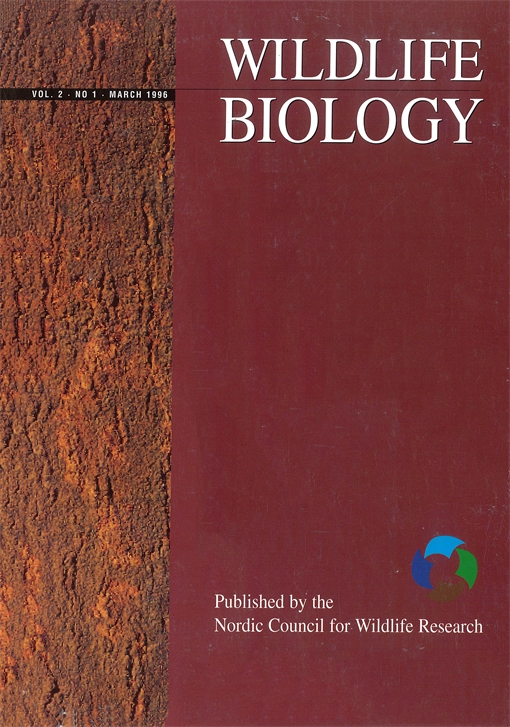This special issue evolved from the OECD workshop “Ecology of introduced, exotic wildlife: Fundamental and economic aspects”, held on April 22–26, 1996 in Ammarnäs, Sweden. The workshop was jointly organised by the Swedish University of Agricultural Sciences, Department of Animal Ecology, Umeå (Sweden), and the University of Helsinki, Department of Applied Zoology, Helsinki (Finland), in co-operation with the Organisation for Economic Co-operation and Development (OECD).
The OECD Co-operative Research Programme
Within the OECD, a co-operative research programme for “Biological Resource Management” has focused since 1990 on four specific topic areas, one of which is “Ecology and utilisation of new organisms” (Theme 3). The activities promoted by this programme are post-doctoral fellowships (announced annually), and the organisation of workshops (1–2 workshops per Theme per year). The 24 participating OECD member countries in this programme are: Australia, Austria, Belgium, Canada, Czech Republic, Denmark, Finland, France, Germany, Greece, Hungary, Ireland, Italy, Japan, the Netherlands, New Zealand, Norway, Portugal, Spain, Sweden, Switzerland, Turkey, the UK, and the USA.
Examples of the items included in Theme 3 of the programme include:
The introduction of new organisms and transgenic crop plants
Insect and weed biocontrol with new organisms
Population biology of new organisms in agricultural systems
Biodiversity and ecological consequence assessment
The sustainability of agricultural systems using new organisms
Mathematical modelling of new organism introductions.
Previous recent workshops, organised within Theme 3 and funded by the OECD Programme, include:
Introduction of non-endemic nematodes for biological control: scientific and regulatory policy issues (proceedings by Ehlers & Deacon, 1996)
Transgenic crop plants: agronomic, economic and ecological aspects (proceedings by Hokkanen & Tsaftaris, 1996)
Benefits and risks of introducing biological control agents (proceedings by Hokkanen & Lynch, 1995)
Ecological implications of transgenic crop plants containing Bacillus thuringiensis toxin genes (proceedings by Hokkanen & Deacon, 1994)
For further information about the OECD Programme please contact professor Heikki Hokkanen, Head of Programme (as of 1.1.1997), Directorate for Food, Agriculture and Fisheries, OECD, 2 rue André-Pascal, F-75775 Paris Cedex 16, France.
The workshop on introduced, exotic wildlife
The aim of this workshop was to review, analyse and discuss the existing collective experience and available information on the benefits, hazards, and management of exotic wildlife. In total, 18 scientists from 9 different OECD countries were invited to participate in the workshop, which was held at the new Ammarnas research station in Swedish Lappland. The scientific program involved contributed paper presentations (with discussions), and structured discussion sessions around the most critical topics. On the last day, the conclusions and recommendations from the workshop were discussed, prepared, and reviewed. These are printed as the first paper of this issue. Together with the conclusions and recommendations from several previous OECD workshops (e.g. on Bt-transgenic crops, nematodes for biological control), they form a set of expert guidelines that can be used by regulators in OECD and other countries in making decisions about introductions of exotic or modified living organisms.
It is evident that the predictiveness of invasion ecology is still quite limited (e.g. Kareiva 1996). Therefore case studies from different kinds of habitats are particularly interesting. In this special issue we have a good representation of two geographical areas, rarely or not at all covered in recent books about invasion ecology (e.g. Mooney & Drake 1986, Drake et al. 1989). These are the species-poor northern Europe, as well as Australia and New Zealand. Especially the case studies on New Zealand are very important because it has experienced a heavy invasion of new mammal and bird species, and it originally had a very depauperate fauna of terrestrial mammals.
Recent reviews on the subject area have seldom addressed topics treated in this issue. These include, besides the specific regional aspects, the severe conservation problems caused by hybridisation between indigenous and exotic species, the pest problems caused by invading and exotic wildlife, and the management (rather than purely ecological) questions of established new species.
These and other papers in this issue are expected to help in developing scientifically sound procedures for responsible utilisation of exotic wildlife, as well as in the management of accidentally released and established populations of exotic vertebrates.
For the success of this workshop we sincerely thank the superb organisation and the supporting personnel in Ammarnäs, Umeå, Helsinki, and Paris.





